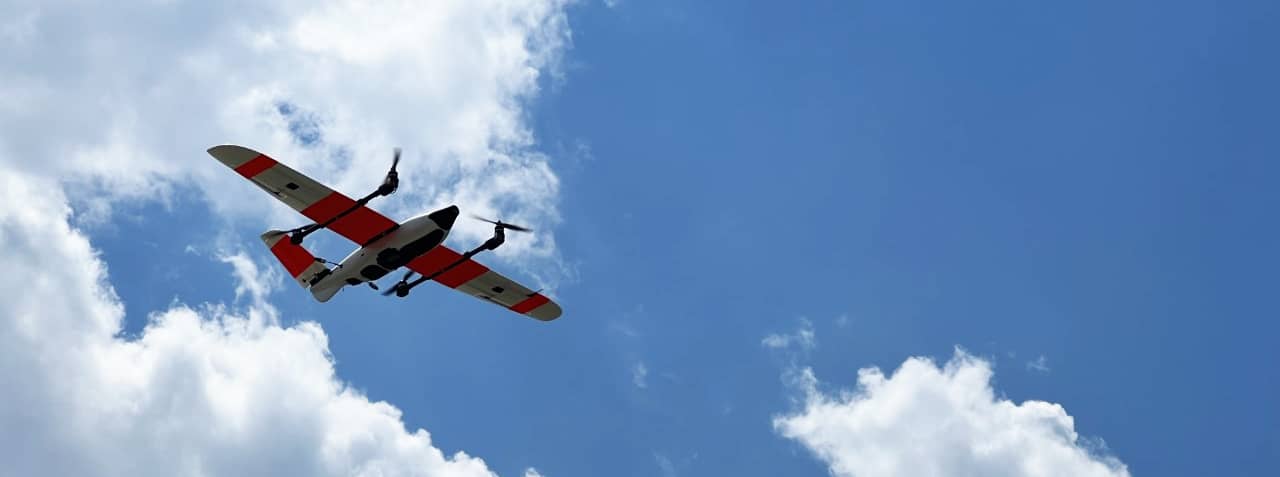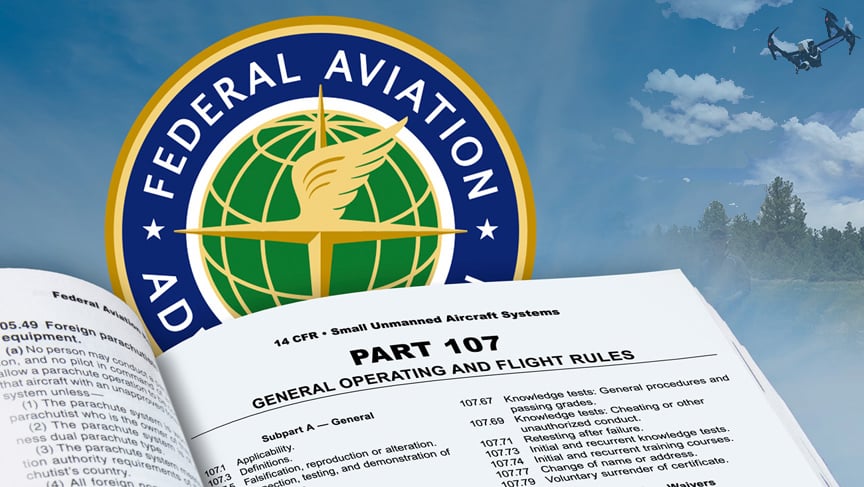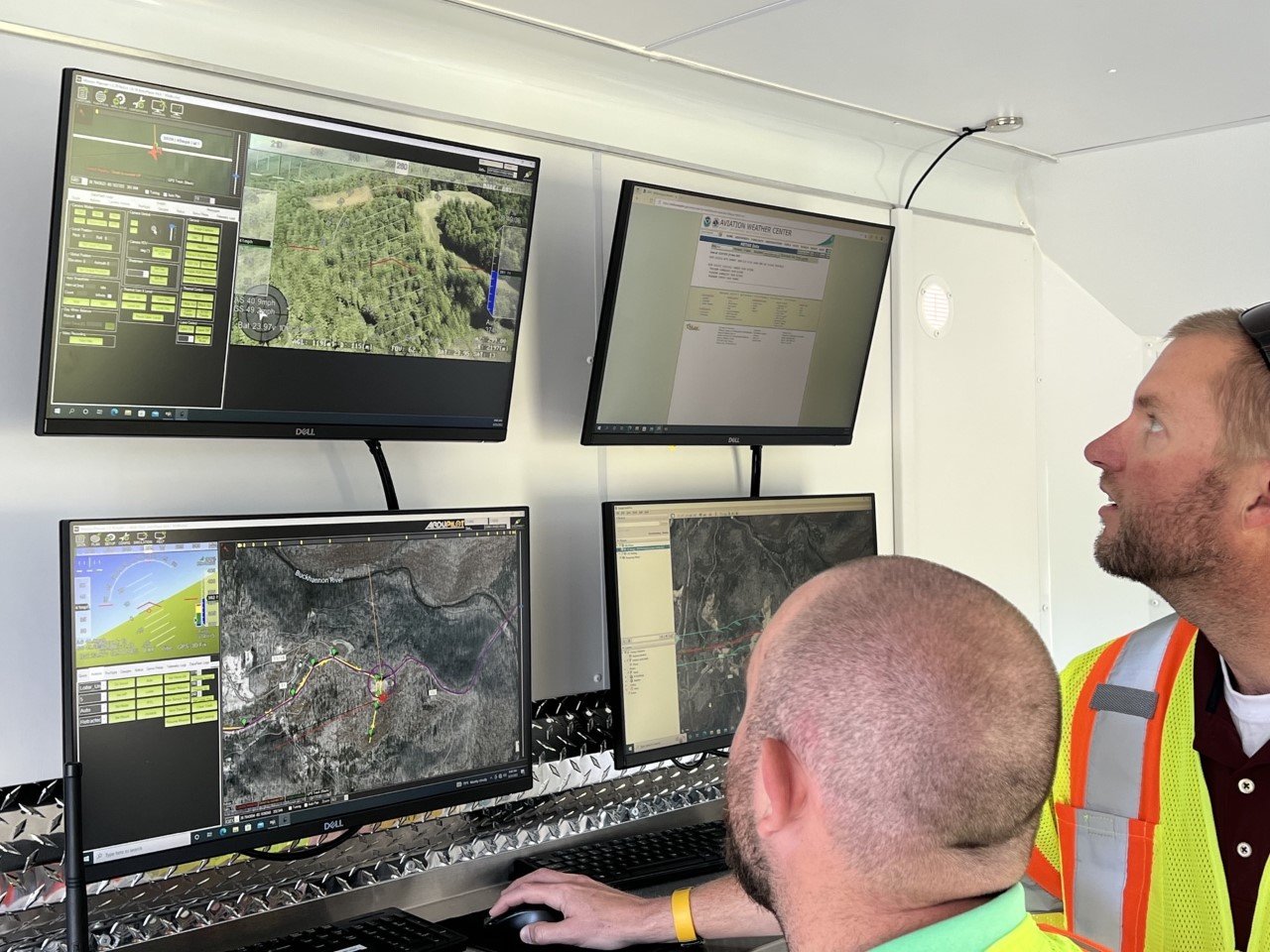BVLOS – A Cure All, or a Tool?

Back to Basics: Normal FAA Part 107 operations
 Under FAA Part 107 operations it is a requirement for the Un-crewed Aircraft (UA) to be operated in a manner where the Remote Pilot in Command (RPIC) and/or a Visual Observer (VO) can maintain un-aided visual contact with the UA during flight operations.
Under FAA Part 107 operations it is a requirement for the Un-crewed Aircraft (UA) to be operated in a manner where the Remote Pilot in Command (RPIC) and/or a Visual Observer (VO) can maintain un-aided visual contact with the UA during flight operations.
In addition to maintaining visual contact with the UA, the RPIC and VO also can view the surrounding airspace to maintain situational awareness regarding maintaining separation and yielding to manned aviation traffic. Under these operations, the RPIC and VO are co-located and able to converse verbally without aide.
 So, what is BVLOS?
So, what is BVLOS?
BVLOS stands for Beyond Visual Line of Sight. In practice, this means the concept of operations (CONOPS) contains an element that requires or is advantageous for the UA to be operated outside of the visual view of the RPIC and/or the VO.
Why would I want to operate BVLOS?
While this is not an all-inclusive list of the possible use cases for BVLOS, here are a few to spark your imagination for how BVLOS could help on your project.
|
Use Case “A”- Right of Way Patrol and Documentation Company “A” wants to routinely fly a 30-mile section of Oil/Gas pipeline Right of Way (ROW) to document conditions, encroachments, and vegetation management. Company “A” wants this 30-mile section to be flown once a month. Could this be flown by a UA with a traditional line-of-sight? Absolutely, however typically the traditional line-of-sight method requires you to break up the 30-mile stretch into small approximate best case 1-mile sections (flying approximately ½-mile to either side of the RPIC and VO) to maintain line-of-sight. The actual visual range also depends on aircraft size and visibility, so the ½-mile is not absolute. Sometimes those sections are shorter due to terrain or not being able to see around obstacles such as trees and structures. But what if you have a UA which has excellent endurance? Wouldn’t it make sense to take advantage of the extra endurance and cover more distance per flight? How do we fly extra distance if we can only see the aircraft at a finite range? Well, a BVLOS waiver from the FAA could come to your rescue! By conducting this operation under a BVLOS waiver from the FAA the 30-mile section could potentially be broken up into larger segments allowing for more efficient operations and thus reducing the time spent in the field to collect data. This could provide cost savings for Company “A.” |
|
Use Case “B”- Large Area Mapping Company “B” is planning on starting construction on a large solar farm approximately 1,500 acres in size. The area proposed has several tree lines running through it which will eventually be cleared during construction. The company wants the 1,500 acres to be routinely flown monthly collecting LiDAR data and orthomosaic imagery to produce a digital terrain model (DTM), digital elevation model (DEM), contour line mapping for topography, planimetrics, and overall construction site monitoring to gauge and document the progress of construction. With the project area being approximately 1,500 acres and several tree lines within the area potentially obstructing the view of the flight, the UA would not be visible to the extent of the project area. Assuming we are using a UA with long endurance, using BVLOS to capitalize on the aircraft’s endurance to fly this area with fewer flights would reduce the field time to accomplish these flights every month and provide cost savings for the company. |
|
Use Case “C”- Facility Inspections (AKA the drone in a box concept) Company “C” has a need to perform routine weekly inspections within several facilities, taking pictures and videos of key areas of interest in and around the facility. The traditional means of doing this type of operation would be to send a UAS crew to each facility to fly the UA and capture the data needed. With this approach, often the travel time to and from the facilities is more than the time it takes to collect the data, even more so if the facilities are spread out throughout the state or even the country. Depending on the scale and the locations of the operations, there is potential that multiple crews would have to mobilize to keep up with the demands of the frequency of data collection. So how could BVLOS possibly help in this scenario? This comes to the emerging technology and concept of the “Drone in a Box” approach. Imagine instead of sending a crew to each site to fly and collect data, a UA is emplaced in each facility within a docking station, an enclosed box to protect the aircraft from the elements while not flying and when it is time to fly. The box opens and allows the aircraft to take off, fly the mission, and return to the box. The aircraft, for lack of better terms, lives at that facility. Once the aircraft lands, the box closes and the batteries in the aircraft are charged via wireless charging in the box, while simultaneously downloading all data collected. By utilizing this approach, combined with a BVLOS waiver, it is possible the flight crew is no longer needed on-site for routine operations. The crew could be located within an office remotely. By reducing travel to and from the facilities, and the aircraft able to be deployed with minimal notice, this greatly improves the efficiency and flexibility of the operations while also potentially providing cost savings over time! |
The FAA BVLOS Waiver
If you noticed, within the use case examples there was a common theme, being routine. These are not one-time operations, but operations that happen repeatedly with a set interval.
The process for obtaining an FAA waiver for BVLOS can be a lot to digest. There is a lot of documentation, preparation, and red tape to navigate to prepare your request for a BVLOS waiver with the FAA. This can take a significant amount of time and energy to prepare. Once the application is submitted to the FAA it can take up to 90-days for the FAA to respond with either approval, denial, or request more information. If you’ve made it this far through the process, then congratulations!
Once the waiver is approved there are conditions set forth by the FAA to allow you to conduct operations under the waiver. One thing to point out is the waiver is based on your original documentation submitted and Concept of Operations (CONOPS) provided to the FAA. If any element of this changes after approval, it is very likely that your waiver is no longer valid and requires either an amendment or a new application for a waiver to be filed. Thus the timeline starts over again with the FAA.
To date, most waivers granted by the FAA are geographically constrained to a specific area of operations, with multiple levels of control measures in place to mitigate risk. This means if you are looking to conduct BVLOS operations in multiple areas with varying CONOPS, it will often require multiple applications for waivers to be submitted for each location’s approval.
Under the current FAA processes for applying for the BVLOS waiver lends itself to being best suited for recurring routine operations in a specific location. Hopefully, in the future, as the technology evolves and BVLOS operations become more widely accepted proving to have a good track record, the process will become more streamlined and easier to obtain.
Effective UAS programs are an orchestra
Back to the title of this article, is “BVLOS- A Cure All, or a Tool?” I often view an effective UAS program as an orchestra. There isn’t just one instrument that can be used to perform an entire symphony, you need multiple sections of different instruments and people brought together in unison to execute the performance.
The same applies to UAS programs and operations. There is not a single aircraft, sensor, data collection methodology, or CONOPS which accomplishes everything needed for every client. Therefore, a UAS program often needs to employ multiple aircraft types, multiple types of sensors, data collection methodologies, and people with varying skill sets to provide a well-balanced program to provide the best service to our clients.
With BVLOS, I see this as another tool to be utilized when appropriate: when the scope of work is such that the addition of a BVLOS component can make the overall operation more efficient while providing cost savings, and better-quality product to our clients over the life of the project.
Percheron's Experience with BVLOS
Earlier this year, Percheron partnered with TC Energy to execute an exploratory project documenting the process of obtaining a Beyond Visual Line of Sight (BVLOS) waiver from the FAA, and the viability of executing BVLOS UAS flights in a real-world scenario along a pre-selected Right of Way in the Northeast. Percheron’s expert UAS team was able to obtain the BVLOS waiver for the operational area in the Northeast and completed multiple BVLOS flights along the selected project route. In the history of commercial UAS flight, there have only been approximately 100 BVLOS waivers granted by the FAA, with Percheron being a part of that elite list.
Want to find out how Percheron’s UAV team can provide innovative solutions on your next project? Give us a call at 832.300.6400 or email
